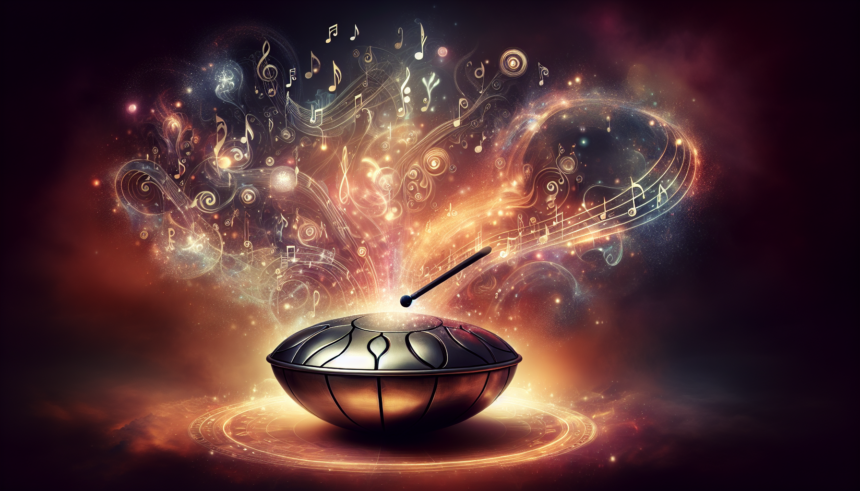<!DOCTYPE html>
<html lang="en">
<head>
<meta charset="UTF-8">
<meta name="viewport" content="width=device-width, initial-scale=1.0">
<title>Fusion Handpan Music</title>
<style>
body {
font-family: Arial, sans-serif;
line-height: 1.6;
margin: 20px;
}
h1 {
color: #333;
}
h2 {
color: #555;
margin-top: 40px;
}
p {
text-align: justify;
margin-bottom: 20px;
}
</style>
</head>
<body>
<h1>Creating Magic: The Compositional Techniques Behind Fusion Handpan Music</h1>
<p>Fusion Handpan Music is a mesmerizing art form that marries the ethereal sounds of the handpan with diverse musical styles from around the world. The handpan itself, a relatively new instrument invented in the early 21st century, has captured the imaginations of musicians and audiences alike with its otherworldly tones and resonant vibes. This article delves into the techniques and musical strategies that artists employ to create fusion handpan music, exploring how they blend different genres and cultures into this enchanting sound.</p>
<h2>The Basics of Handpan</h2>
<p>Understanding the handpan is crucial to delving into its compositional techniques. Handpans are steel drums, carefully crafted and tuned to produce a hauntingly beautiful range of tones. Each handpan typically contains a central note known as the Ding, surrounded by a series of harmonically related notes. Musicians strike these notes with their hands, producing a wide array of melodies and harmonies.</p>
<p>The handpan's layout is designed to facilitate improvisation, making it particularly suited to fusion music. Its harmonic nature, combined with intuitive playability, allows musicians to explore new scales, rhythms, and structures.</p>
<h2>Combining Genres: The Heart of Fusion</h2>
<p>Fusion handpan music is an eclectic blend of various musical genres and traditions. Artists draw inspiration from jazz, classical, world music, electronic, and more. This genre-bending approach opens up a rich palette of sounds and textures.</p>
<p>One popular method is to weave the handpan's distinctive tones into an existing musical style, such as jazz. Here, the handpan can substitute or complement traditional instruments like the piano or saxophone, adding a unique sonic dimension. Jazz musicians often employ improvisation, a technique that handpan players naturally extend due to the instrument's melodic and percussive qualities.</p>
<p>Incorporating classical influences requires a delicate balance of structure and creativity. Composers often write intricate handpan pieces that blend the harmony and counterpoint of classical music with the free-flowing nature of the handpan.</p>
<p>World music offers another source of inspiration. By integrating traditional rhythms, scales, and instruments from cultures around the globe, artists can create a transcendent experience. African, Indian, and Latin American musical elements frequently find their way into fusion handpan compositions.</p>
<h2>Exploring Tonal and Rhythmic Patterns</h2>
<p>Harmonically, fusion handpan music thrives on using diverse scales and modes. Musicians frequently delve into lesser-known tonal systems, integrating them seamlessly into their compositions. Modes such as Dorian, Phrygian, and Lydian can give handpan music an exotic and expansive feel.</p>
<p>The rhythmic aspect of handpan playing is equally vital. Complex time signatures and syncopated rhythms often drive fusion compositions. These elements challenge musicians to explore new rhythmic patterns, creating layers of percussion and melody.</p>
<p>Polyrhythms—where multiple rhythms are played simultaneously—add depth and intrigue. This technique, drawing from African and Latin traditions, can be seamlessly applied to the handpan. By simultaneously playing different rhythms on each hand, musicians evoke a rich tapestry of sound.</p>
<h2>Innovative Techniques and Technologies</h2>
<p>Contemporary fusion handpan artists often incorporate technology to expand their sonic palette. Loop pedals, for example, allow musicians to layer multiple handpan lines, building intricate and evolving soundscapes. The use of digital effects, such as reverb and delay, can further enhance the ethereal quality of the handpan's sound.</p>
<p>Additionally, collaborations with electronic music producers provide new possibilities. By blending acoustic handpan sounds with synthesized elements, musicians can push the boundaries of traditional handpan music. This fusion of acoustic and electronic elements creates a unique auditory experience that resonates with diverse audiences.</p>
<h2>Compositional Approaches in Fusion Handpan Music</h2>
<p>When creating fusion handpan music, composers often take either a structured or improvisational approach. Structured compositions offer rich, detailed arrangements that convey specific emotions and narratives. They employ deliberate harmonic progressions and well-crafted melodies tailored to the handpan's distinct sound.</p>
<p>Conversely, improvisational compositions rely heavily on the artist's intuition and spontaneity. Musicians explore ambient soundscapes and let the moment guide the flow of their music. This approach embraces the serendipitous nature of musical creation, where every performance offers a new interpretation.</p>
<p>These approaches are not mutually exclusive. Many compositions find their genesis in improvisation, only to be developed into structured pieces. This dynamic interplay between spontaneity and deliberation characterizes much of fusion handpan music.</p>
<h2>The Role of Emotion and Storytelling</h2>
<p>Emotion and storytelling are at the core of fusion handpan compositions. Artists strive to evoke emotions and convey narratives through their music, harnessing the instrument's expressive capabilities. The handpan’s enchanting sounds readily lend themselves to conveying themes of tranquility, introspection, and joy.</p>
<p>Melodic motifs play a significant role in storytelling. By developing and transforming these motifs throughout a piece, musicians can take listeners on a journey of transformation and discovery. Dynamics, tempo changes, and timbral shifts further enhance the emotional impact, allowing performers to craft vivid sonic tales.</p>
<h2>Conclusion</h2>
<p>Fusion handpan music represents an exciting and evolving musical frontier. By blending diverse genres, scales, and rhythms, artists craft an intricate tapestry of sound that transcends cultural boundaries. The handpan, with its unique tonal qualities, serves as both a musical canvas and a vehicle for creative expression. As musicians continue to explore and innovate, fusion handpan music promises to captivate and inspire audiences worldwide, resonating with its magical interplay of tradition and innovation.</p>
<h2>Frequently Asked Questions (FAQs)</h2>
<h3>1. What makes the handpan unique compared to other instruments?</h3>
<p>The handpan is unique due to its rich harmonic overtones, ease of playability, and ability to facilitate both rhythmic and melodic expression. Its distinctive scale arrangement also allows for intuitive and improvisational playing, making it particularly suitable for fusion music.</p>
<h3>2. How can I start combining different musical styles with the handpan?</h3>
<p>To combine different musical styles with the handpan, start by understanding the basic scale and rhythm of the handpan. Experiment with integrating elements from other genres, like jazz or world music. Begin with simple compositions and gradually explore more complex structures and rhythms as you become comfortable with the instrument.</p>
<h3>3. Is technology essential for creating fusion handpan music?</h3>
<p>While technology is not essential, it can significantly enhance fusion handpan music. Tools like loop pedals and digital effects can expand your musical possibilities, allowing for the creation of layered compositions and invoking a broader range of sounds.</p>
<h3>4. What are polyrhythms and how can they be applied to handpan music?</h3>
<p>Polyrhythms involve playing multiple contrasting rhythms simultaneously. They can be applied to handpan music by using the left and right hand to play different rhythmic patterns, creating complex textures and interwoven rhythms that add depth to a composition.</p>
<h3>5. Can I create handpan music without formal musical training?</h3>
<p>Absolutely! Many handpan players are self-taught. The instrument's design facilitates intuitive playing, allowing individuals without formal musical training to explore and create music. With practice, anyone can craft beautiful compositions on the handpan, especially within the genre of fusion music.</p>
</body>
</html>Creating Magic: The Compositional Techniques Behind Fusion Handpan Music

Leave a comment




